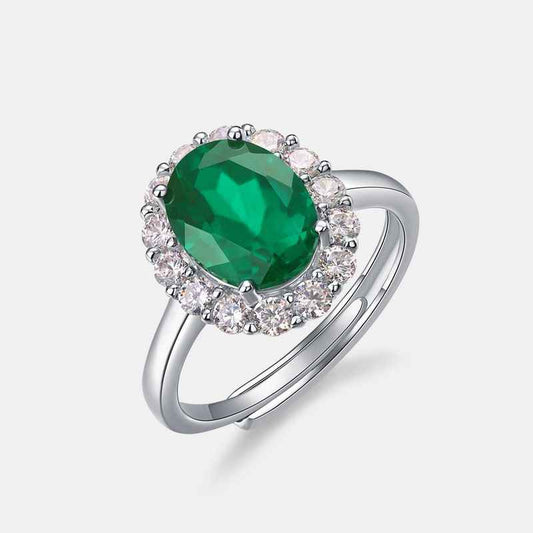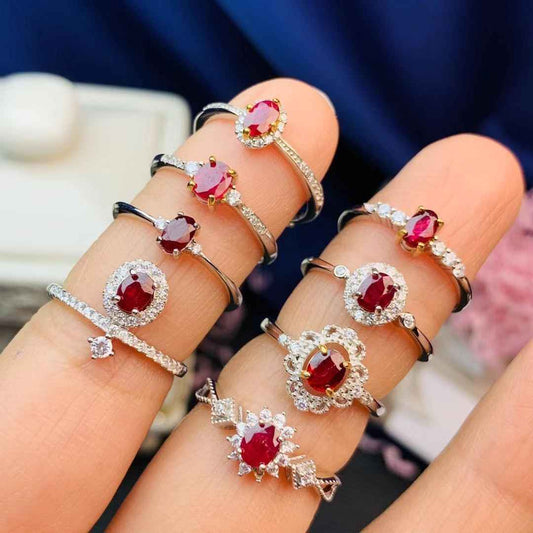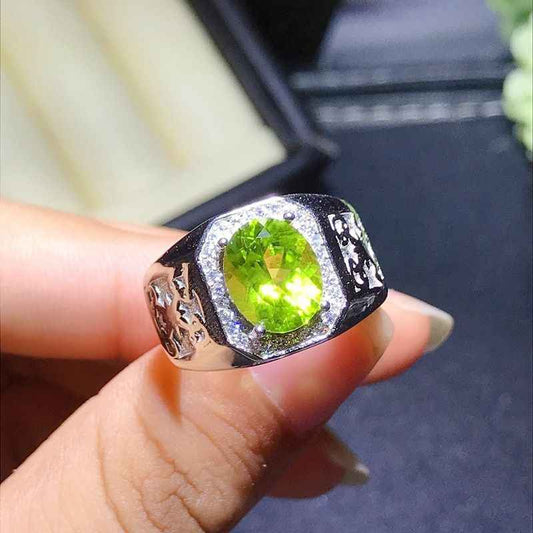8742444761317,
8794694713573,
8826709541093,
8885939470565,
8896647233765,
8896652017893,
8896714211557,
8744240611557,
8797679714533,
8794919239909,
8783134556389,
8812248039653,
8814150582501,
8815907045605,
8816001024229,
8855966384357,
8870881100005,
8876144885989,
8882678464741,
8904790376677,
8904935571685,
8914780618981,
8794694713573,
8783134556389,
8783094055141,
8744240611557,
8743166640357,
8884206239973,
8884169834725,
8879409234149,
8879409234149,
8884206239973,
8884169834725,
8791856709861,
8788716814565,
8789401436389,
8791692411109,
8794679443685,
8815873589477,
8914780618981,
8794685505765,
8817033117925,
8791898849509,
8791720657125,
8789427618021,
8788603142373,
8816483696869,
8794674561253,
8791856709861,
8791720657125,
8789427618021,
8789401436389,
8789373485285,
8788595900645,
8783172305125,
8782536704229,
8782643200229,
8782516748517,
8782687338725,
8792132092133,
8789373485285,
8789386002661,
8791708565733,
8794674561253,
8896847053029,
8885899886821,
8885856567525,
8885635383525,
8882157289701,
8819017711845,
8816013443301,
8794627735781,
8791869456613,
8791748182245,
8789412053221,
8788595900645,
8783172305125,
8796558950629,
8792487526629,
8789437481189,
8785386733797,
8785359962341,
8792633606373,
8789445640421,
8796529983717,
8796336259301,
8813289996517,
8789429715173,
8785359962341,
8785373266149,
8785343086821,
8785386733797,
8789437481189,
8789445640421,
8789449179365,
8792487526629,
8792633606373,
8796529983717,
8796558950629,
8796597125349,
8792517771493,
8792829788389,
8813558104293,
8884491288805,
8813558104293,
8796597125349,
8792829788389,
8789449179365,
8785373266149,
8884491288805,
8813289996517,
8796336259301,
8792517771493,
8789429715173,
8785343086821,
8904935571685,
8904790376677,
8882678464741,
8816001024229,
8815907045605,
8815873589477,
8794919239909,
8791692411109,
8789401436389,
8783134556389,
8882726273253,
8817033117925,
8816483696869,
8794886111461,
8791720657125,
8789427618021,
8783094055141,
8789386002661,
8794886111461,
8794919239909,
8783134556389,
8783094055141,
8783172305125,
8783152840933,
8789401436389,
8789412053221,
8789427618021,
8791708565733,
8791720657125,
8794694713573,
8795207172325,
8791692411109,
8791748182245,
8815873589477,
8815907045605,
8816001024229,
8816013443301,
8816182493413,
8816483696869,
8817033117925,
8882157289701,
8882678464741,
8882726273253,
8885635383525,
8885899886821,
8890183450853,
8896847053029,
8904790376677,
8904935571685,
8783152840933,
8795207172325,
8789386002661,
8791708565733,
8816182493413,
8896847053029,
8890183450853,
8885899886821,
8885635383525,
8882157289701,
8816013443301,
8794694713573,
8791748182245,
8789412053221,
8783172305125,
8885782905061,
8871071252709,
8872868774117,
8872865399013,
8872453931237,
8875943919845,
8869042946277,
8877100892389,
8870554304741,
8870579929317,
8877100892389,
8870554304741,
8870524420325,
8869042946277,
8875943919845,
8876064276709,
8877140312293,
8879843573989,
8885776351461,
8892905095397,
8899492479205,
8892905095397,
8870579929317,
8899492479205,
8885776351461,
8879843573989,
8877140312293,
8876064276709,
8870524420325,
8885856567525,
8884305887461,
8877279576293,
8884311064805,
8875783880933,
8884264042725,
8867535028453,
8867408806117,
8867351986405,
8863584878821,
8792633606373,
8884378960101,
8890183450853,
8896211189989,
8896220922085,
8896858587365,
8904758722789,
8816229548261,
8881952981221,
8863994970341,
8795261305061,
8794627735781,
8791364534501,
8791193485541,
8789386002661,
8905391046885,
8904738930917,
8896656441573,
8896377356517,
8890183450853,
8884264042725,
8882157289701,
8789685895397,
8818999656677,
8793898287333,
8793871057125,
8782872641765,
8794393182437,
8793915621605,
8782851080421,
8863983108325,
8863994970341,
8875377950949,
8875444994277,
8863547195621,
8875414487269,
8875386306789,
8867624452325,
8875458298085,
8873407348965,
8875661590757,
8870080250085,
8869272027365,
8870652018917,
8870629867749,
8877432635621,
8812248039653,
8797679714533,
8794685505765,
8863584878821,
8877279576293,
8867535028453,
8867408806117,
8867351986405,
8792633606373,
8870881100005,
8791801528549,
8808409301221,
8788603142373,
8782687338725,
8807976960229,
8874237624549,
8864868303077,
8872308572389,
8875783880933,
8887890215141,
8795388805349,
8795357872357,
8818720932069,
8817926602981,
8817902223589,
8795317534949,
8795261305061,
8792444240101,
8792391221477,
8792295604453,
8792201461989,
8791193485541,
8791148691685,
8791117136101,
8790459416805,
8785315758309,
8785241800933,
8784970350821,
8784252272869,
8881589354725,
8890894942437,
8742444761317,
8877100892389,
8876064276709,
8875943919845,
8872308572389,
8870579929317,
8870554304741,
8870524420325,
8869042946277,
8877140312293,
8855966384357,
8847668510949,
8829509337317,
8829502914789,
8826709541093,
8818999656677,
8818993627365,
8818752651493,
8818731385061,
8816393191653,
8816229548261,
8814801682661,
8814778810597,
8812248039653,
8809833529573,
8798004019429,
8797679714533,
8797300293861,
8797219160293,
8794886111461,
8794393182437,
8793915621605,
8793898287333,
8793871057125,
8792880775397,
8792868585701,
8792857215205,
8792845844709,
8791836852453,
8791815061733,
8791801528549,
8791764205797,
8791350706405,
8791321739493,
8791299916005,
8791211606245,
8789858353381,
8789685895397,
8789666791653,
8789659091173,
8823006331109,
8905007988965,
8904981774565,
8903957709029,
8899137732837,
8899111747813,
8882875990245,
8876465586405,
8874225467621,
8871071252709,
8870881100005,
8867813261541,
8867624452325,
8823685316837,
8820860223717,
8814150582501,
8812248039653,
8807979253989,
8797679714533,
8794596114661,
8792868585701,
8791487447269,
8791350706405,
8788137214181,
8744240611557,
8782427128037,
8789666791653,
8782427128037,
8807979253989,
8795357872357,
8788137214181,
8794919239909,
8791350706405,
8782898036965,
8744240611557,
8794393182437,
8808397603045,
8797679714533,
8796558950629,
8794679443685,
8794596114661,
8792868585701,
8792487526629,
8792295604453,
8791856709861,
8791801528549,
8791692411109,
8791487447269,
8791117136101,
8789437481189,
8789401436389,
8788716814565,
8785386733797,
8784970350821,
8783134556389,
8782687338725,
8814150582501,
8815873589477,
8815907045605,
8816001024229,
8818999656677,
8820860223717,
8820902101221,
8823006331109,
8823685316837,
8855966384357,
8867351986405,
8867584573669,
8867624452325,
8867813261541,
8869042946277,
8870273614053,
8870652018917,
8870881100005,
8871071252709,
8874225467621,
8905007988965,
8904981774565,
8899137732837,
8899111747813,
8874225467621,
8867624452325,
8902316622053,
8899254681829,
8899245441253,
8899097460965,
8863983108325,
8874225467621,
8863547195621,
8863983108325,
8863994970341,
8867624452325,
8875377950949,
8875386306789,
8875414487269,
8875444994277,
8885032059109,
8885207892197,
8896932544741,
8899097460965,
8899111747813,
8899130687717,
8899137732837,
8899231744229,
8899245441253,
8899254681829,
8899537371365,
8900755325157,
8902316622053,
8903846920421,
8904981774565,
8905007988965,
8900755325157,
8899537371365,
8899231744229,
8875414487269,
8863547195621,
8903846920421,
8899130687717,
8896932544741,
8885207892197,
8885032059109,
8875444994277,
8875386306789,
8875377950949,
8863994970341,
8882875990245,
8882519179493,
8881660330213,
8881681563877,
8890183450853,
8897174929637,
8904777040101,
8904851980517,
8904777040101,
8885635383525,
8818752651493,
8884906066149,
8793915621605,
8879520874725,
8872308572389,
8818999656677,
8818993627365,
8818731385061,
8809833529573,
8794393182437,
8793898287333,
8793871057125,
8791836852453,
8791815061733,
8791801528549,
8791764205797,
8789858353381,
8789685895397,
8789666791653,
8789659091173,
8782908588261,
8782898036965,
8782872641765,
8782851080421,
8880828874981,
8882119868645,
8882767855845,
8883015123173,
8884389642469,
8884400652517,
8884452655333,
8884968685797,
8885128364261,
8890183450853,
8871071252709,
8872865399013,
8872453931237,
8872865399013,
8871071252709,
8872868774117,
8885782905061,
8872453931237,
8885782905061,
8872868774117,
8794449740005,
8782643200229,
8797219160293,
8791898849509,
8795317534949,
8796529983717,
8794685505765,
8789685895397,
8793871057125,
8792880775397,
8792633606373,
8792444240101,
8782908588261,
8791764205797,
8791720657125,
8791446880485,
8791211606245,
8794886111461,
8790459416805,
8789445640421,
8789427618021,
8788603142373,
8788079968485,
8785359962341,
8785241800933,
8783094055141,
8780674695397,
8743166640357,
8812196266213,
8812223987941,
8813568164069,
8814778810597,
8814801682661,
8816483696869,
8817033117925,
8820600209637,
8829502914789,
8829509337317,
8847668510949,
8861916659941,
8863983108325,
8864002146533,
8867408806117,
8869272027365,
8870122914021,
8870554304741,
8870712049893,
8872865399013,
8873407348965,
8874237624549,
8791764205797,
8809833529573,
8782908588261,
8789685895397,
8793871057125,
8792880775397,
8791211606245,
8743166640357,
8797219160293,
8782643200229,
8794685505765,
8791898849509,
8788603142373,
8808418279653,
8807976960229,
8795317534949,
8790459416805,
8785241800933,
8792444240101,
8780674695397,
8791446880485,
8794449740005,
8788079968485,
8791720657125,
8794886111461,
8789427618021,
8783094055141,
8785359962341,
8796529983717,
8792633606373,
8789445640421,
8876465586405,
8867813261541,
8892900245733,
8876334743781,
8864002146533,
8876307480805,
8864002146533,
8864735199461,
8867813261541,
8861899096293,
8876334743781,
8876438290661,
8876465586405,
8881030529253,
8885754790117,
8892882976997,
8892900245733,
8896714211557,
8881030529253,
8876307480805,
8864735199461,
8896714211557,
8892882976997,
8885754790117,
8876438290661,
8861899096293,
8782898036965,
8785386733797,
8789666791653,
8791801528549,
8792487526629,
8794393182437,
8796558950629,
8818999656677,
8869042946277,
8872308572389,
8875943919845,
8881921065189,
8899610444005,
8903856357605,
8903890764005,
8904738930917,
8905391046885,
8782908588261,
8793871057125,
8809833529573,
8796529983717,
8791764205797,
8789685895397,
8785359962341,
8870554304741,
8792633606373,
8874379084005,
8877100892389,
8879263875301,
8884452655333,
8893475750117,
8870105088229,
8813558104293,
8789659091173,
8785359962341,
8785386733797,
8785343086821,
8785373266149,
8782898036965,
8782908588261,
8782872641765,
8782851080421,
8902964510949,
8902345883877,
8893992108261,
8893443342565,
8893386588389,
8892905095397,
8884968685797,
8884389642469,
8882846957797,
8882767855845,
8882629869797,
8879882567909,
8879409234149,
8879344517349,
8876699812069,
8870579929317,
8868955947237,
8813558104293,
8796597125349,
8793898287333,
8791836852453,
8789858353381,
8782872641765,
8785373266149,
8885899886821,
8885635383525,
8789386002661,
8817033117925,
8816483696869,
8816182493413,
8816013443301,
8816001024229,
8815907045605,
8815873589477,
8795207172325,
8794919239909,
8794886111461,
8794694713573,
8791748182245,
8791720657125,
8791708565733,
8791692411109,
8789427618021,
8789412053221,
8789401436389,
8783172305125,
8783152840933,
8783134556389,
8783094055141,
8882157289701,
8882678464741,
8882726273253,
8890183450853,
8896847053029,
8904790376677,
8904935571685,
8903890764005,
8869272027365,
8812196266213,
8794596114661,
8792880775397,
8791148691685,
8791117136101,
8789858353381,
8789659091173,
8789449179365,
8789445640421,
8789429715173,
8789412053221,
8789386002661,
8788716814565,
8788603142373,
8788595900645,
8788178796773,
8788137214181,
8788105167077,
8788079968485,
8782536704229,
8782643200229,
8782516748517,
8782687338725,
8782898036965,
8782908588261,
8782872641765,
8782851080421,
8784252272869,
8785315758309,
8785241800933,
8784970350821,
8783152840933,
8783172305125,
8783094055141,
8783134556389,
8782459830501,
8782362935525,
8780674695397,
8782427128037,
8785359962341,
8785386733797,
8785343086821,
8785373266149,
8744240611557,
8742444761317,
8785795514597,
8743166640357,
8902316622053,
8899254681829,
8899097460965,
8892900245733,
8880687055077,
8876334743781,
8872865399013,
8870712049893,
8864002146533,
8847668510949,
8820600209637,
8814801682661,
8813568164069,
8812196266213,
8807976960229,
8794449740005,
8792880775397,
8791446880485,
8791211606245,
8788079968485,
8780674695397,
8813660635365,
8813568164069,
8794596114661,
8794502693093,
8794449740005,
8792857215205,
8792845844709,
8791553835237,
8791487447269,
8791446880485,
8791350706405,
8791299916005,
8788178796773,
8788137214181,
8788105167077,
8788079968485,
8782459830501,
8782362935525,
8780674695397,
8782427128037,
8788178796773,
8782459830501,
8742444761317,
8791321739493,
8791364534501,
8792845844709,
8794421002469,
8797300293861,
8807975321829,
8808409301221,
8813660635365,
8813813792997,
8820559970533,
8821001650405,
8821034778853,
8824090853605,
8826709541093,
8845964476645,
8846004912357,
8846024245477,
8861899096293,
8863994970341,
8870720897253,
8872868774117,
8872888336613,
8873380675813,
8875377950949,
8875386306789,
8875444994277,
8876438290661,
8879506129125,
8881660330213,
8885032059109,
8885128364261,
8885207892197,
8885754790117,
8885782905061,
8885856567525,
8886177857765,
8886196011237,
8892882976997,
8896858587365,
8896932544741,
8897152581861,
8899130687717,
8903846920421,
8905391046885,
8904738930917,
8882599231717,
8881921065189,
8870273614053,
8896377356517,
8874379084005,
8870122914021,
8876699812069,
8870122914021,
8870273614053,
8870105088229,
8868955947237,
8874379084005,
8875362058469,
8881921065189,
8882105188581,
8882599231717,
8882629869797,
8885730443493,
8896377356517,
8896656441573,
8904738930917,
8905391046885,
8882629869797,
8876699812069,
8868955947237,
8896656441573,
8885730443493,
8882105188581,
8875362058469,
8870105088229,
8914780618981,
8904851980517,
8904777040101,
8903890764005,
8903856357605,
8902484361445,
8902316622053,
8900755325157,
8899610444005,
8899537371365,
8899492479205,
8899254681829,
8899245441253,
8899231744229,
8899130687717,
8899097460965,
8897174929637,
8896932544741,
8896714211557,
8896656441573,
8896652017893,
8896647233765,
8896408715493,
8896377356517,
8896237502693,
8893992108261,
8893475750117,
8893443342565,
8893386588389,
8893355098341,
8892930359525,
8892905095397,
8892900245733,
8881681563877,
8887896637669,
8887890215141,
8885899886821,
8885882781925,
8885856567525,
8885782905061,
8885776351461,
8885754790117,
8885730443493,
8885559099621,
8885336113381,
8885207892197,
8885032059109,
8884968685797,
8788105167077,
8782362935525,
8785795514597,
8791299916005,
8791553835237,
8792857215205,
8794502693093,
8798004019429,
8807968211173,
8807970668773,
8810185818341,
8810194698469,
8814204485861,
8814345257189,
8820319617253,
8821071151333,
8821877407973,
8823751737573,
8823818748133,
8823903486181,
8825893912805,
8845934821605,
8856089231589,
8856137695461,
8856173117669,
8856665161957,
8856681677029,
8863547195621,
8864735199461,
8872453931237,
8872914682085,
8875414487269,
8879409234149,
8890894942437,
8899537371365,
8900755325157,
8845964476645,
8877279576293,
8876465586405,
8876438290661,
8876334743781,
8876307480805,
8867813261541,
8867535028453,
8867408806117,
8867351986405,
8864735199461,
8864002146533,
8863584878821,
8861899096293,
8856681677029,
8856665161957,
8856173117669,
8856137695461,
8856089231589,
8846024245477,
8846004912357,
8823818748133,
8823685316837,
8821877407973,
8821071151333,
8821034778853,
8821001650405,
8814345257189,
8814204485861,
8814150582501,
8813813792997,
8813660635365,
8813568164069,
8812196266213,
8810194698469,
8810185818341,
8794502693093,
8794449740005,
8794421002469,
8791553835237,
8791487447269,
8791446880485,
8791364534501,
8788178796773,
8788105167077,
8782459830501,
8782427128037,
8782362935525,
8780674695397,
8880687055077,
8782427128037,
8788137214181,
8791487447269,
8794596114661,
8814150582501,
8823006331109,
8823685316837,
8880687055077,
8813568164069,
8812196266213,
8794449740005,
8791446880485,
8788079968485,
8780674695397,
8782427128037,
8782362935525,
8780674695397,
8782459830501,
8788079968485,
8788178796773,
8794421002469,
8788105167077,
8791487447269,
8791553835237,
8794502693093,
8794449740005,
8791446880485,
8788137214181,
8791364534501,
8794596114661,
8810185818341,
8810194698469,
8812196266213,
8813568164069,
8813660635365,
8813813792997,
8814150582501,
8814204485861,
8814345257189,
8821001650405,
8821034778853,
8821071151333,
8821877407973,
8823006331109,
8823685316837,
8823751737573,
8823818748133,
8823903486181,
8824090853605,
8825893912805,
8845934821605,
8845964476645,
8846004912357,
8846024245477,
8856089231589,
8856137695461,
8856173117669,
8856665161957,
8856681677029,
8880687055077,
8856681677029,
8856665161957,
8856173117669,
8856137695461,
8856089231589,
8845934821605,
8825893912805,
8823903486181,
8823818748133,
8823751737573,
8821877407973,
8821071151333,
8814345257189,
8814204485861,
8810194698469,
8810185818341,
8794502693093,
8791553835237,
8788105167077,
8782362935525,
8846024245477,
8846004912357,
8845964476645,
8824090853605,
8821034778853,
8821001650405,
8813813792997,
8813660635365,
8794421002469,
8791364534501,
8788178796773,
8782459830501,
8870122914021,
8885730443493,
8876699812069,
8875362058469,
8874379084005,
8870273614053,
8870105088229,
8868955947237,
8881921065189,
8882105188581,
8882599231717,
8882629869797,
8896377356517,
8904738930917,
8905391046885,
8892930359525,
8896647233765,
8892949102821,
8886177857765,
8880932880613,
8876169560293,
8876144885989,
8873380675813,
8872914682085,
8872888336613,
8870881100005,
8870720897253,
8870712049893,
8869047828709,
8903957709029,
8914780618981,
8885559099621,
8875783880933,
8879409234149,
8879344517349,
8879263875301,
8874237624549,
8872308572389,
8867584573669,
8867457269989,
8865848525029,
8864868303077,
8861916659941,
8812223987941,
8880687055077,
8880828874981,
8791117136101,
8882376474853,
8882410193125,
8882846957797,
8884169834725,
8884206239973,
8885336113381,
8887896637669,
8890894942437,
8890941538533,
8893443342565,
8893475750117,
8893992108261,
8896237502693,
8896408715493,
8899610444005,
8902345883877,
8903890764005,
8904777040101,
8903890764005,
8903856357605,
8879882567909,
8882383192293,
8879443411173,
8902323929317,
8902331990245,
8902484361445,
8902964510949,
8903890764005,
8902964510949,
8879882567909,
8902484361445,
8902331990245,
8902323929317,
8882383192293,
8879443411173,
8885776351461,
8870579929317,
8877140312293,
8877100892389,
8876064276709,
8875943919845,
8870554304741,
8870524420325,
8869042946277,
8879843573989,
8892905095397,
8899492479205,
8791350706405,
8744240611557,
8792868585701,
8797679714533,
8794596114661,
8788137214181,
8791487447269,
8782427128037,
8808397603045,
8807979253989,
8782687338725,
8791856709861,
8788716814565,
8794679443685,
8782898036965,
8789666791653,
8791801528549,
8794393182437,
8792295604453,
8784970350821,
8791117136101,
8795357872357,
8794919239909,
8791692411109,
8789401436389,
8783134556389,
8789437481189,
8785386733797,
8796558950629,
8792487526629,
8807972372709,
8807970668773,
8807968211173,
8794674561253,
8792132092133,
8782516748517,
8789373485285,
8791836852453,
8789858353381,
8793898287333,
8782872641765,
8784252272869,
8795388805349,
8791193485541,
8792391221477,
8783152840933,
8795207172325,
8789386002661,
8791708565733,
8782362935525,
8794502693093,
8791553835237,
8788105167077,
8792829788389,
8796597125349,
8785373266149,
8789449179365,
8791299916005,
8785795514597,
8798004019429,
8792857215205,
8885754790117,
8876438290661,
8876465586405,
8876334743781,
8876307480805,
8867813261541,
8864735199461,
8864002146533,
8861899096293,
8881030529253,
8892882976997,
8892900245733,
8896714211557,
8904777040101,
8899610444005,
8893475750117,
8879263875301,
8893992108261,
8893475750117,
8893443342565,
8885336113381,
8879344517349,
8879263875301,
8882376474853,
8882846957797,
8896237502693,
8899610444005,
8902345883877,
8904777040101,
8902345883877,
8893992108261,
8893443342565,
8882846957797,
8879344517349,
8896237502693,
8885336113381,
8882376474853,
8792132092133,
8789386002661,
8788105167077,
8789858353381,
8793898287333,
8794674561253,
8791193485541,
8782516748517,
8785373266149,
8783152840933,
8782362935525,
8782872641765,
8807972372709,
8807968211173,
8798004019429,
8796597125349,
8807970668773,
8795388805349,
8795207172325,
8794502693093,
8792857215205,
8792829788389,
8792391221477,
8791836852453,
8791708565733,
8791553835237,
8791299916005,
8789449179365,
8789373485285,
8785795514597,
8784252272869,
8810185818341,
8813558104293,
8814204485861,
8814345257189,
8816182493413,
8816229548261,
8816393191653,
8817902223589,
8817926602981,
8820319617253,
8821071151333,
8821877407973,
8823751737573,
8823818748133,
8823903486181,
8825893912805,
8845934821605,
8856089231589,
8856137695461,
8807976960229,
8807975321829,
8863983108325,
8863547195621,
8861916659941,
8864002146533,
8792132092133,
8791193485541,
8789386002661,
8789666791653,
8744240611557,
8797679714533,
8788137214181,
8782643200229,
8789412053221,
8794627735781,
8785315758309,
8789429715173,
8885207892197,
8885032059109,
8875444994277,
8875414487269,
8875386306789,
8875377950949,
8874225467621,
8867624452325,
8863994970341,
8863983108325,
8890183450853,
8863547195621,
8896932544741,
8899097460965,
8899111747813,
8899130687717,
8899137732837,
8899231744229,
8899245441253,
8899254681829,
8899537371365,
8900755325157,
8903846920421,
8904981774565,
8905007988965,
8881589354725,
8795357872357,
8792295604453,
8791117136101,
8784970350821,
8795317534949,
8792444240101,
8790459416805,
8785241800933,
8791193485541,
8784970350821,
8785241800933,
8785315758309,
8784252272869,
8791117136101,
8795357872357,
8792444240101,
8791148691685,
8792391221477,
8790459416805,
8795261305061,
8795388805349,
8795317534949,
8792201461989,
8792295604453,
8817902223589,
8817926602981,
8818720932069,
8881589354725,
8887890215141,
8791193485541,
8784252272869,
8792391221477,
8795388805349,
8817902223589,
8817926602981,
8887890215141,
8818720932069,
8795261305061,
8792201461989,
8791148691685,
8785315758309,
8885882781925,
8875661590757,
8877432635621,
8879506129125,
8875458298085,
8873407348965,
8870652018917,
8870629867749,
8870080250085,
8869272027365,
8881660330213,
8881681563877,
8881788846309,
8881952981221,
8882437718245,
8882519179493,
8882875990245,
8893355098341,
8893386588389,
8897174929637,
8904851980517,
8882437718245,
8881788846309,
8870652018917,
8873407348965,
8869272027365,
8875661590757,
8875458298085,
8870629867749,
8873407348965,
8869272027365,
8870080250085,
8870652018917,
8877432635621,
8881788846309,
8881952981221,
8882437718245,
8885882781925,
8897174929637,
8877432635621,
8875661590757,
8870080250085,
8897174929637,
8885882781925,
8881952981221,
8875458298085,
8870629867749,
8813558104293,
8884491288805,
8796558950629,
8792829788389,
8792633606373,
8792517771493,
8792487526629,
8789449179365,
8789445640421,
8789437481189,
8789429715173,
8785386733797,
8785359962341,
8875444994277,
8875377950949,
8893355098341,
8893386588389,
8899097460965,
8899111747813,
8899130687717,
8902316622053,
8823903486181,
8903890764005,
8791117136101,
8782687338725,
8872308572389,
8867584573669,
8880828874981,
8880687055077,
8812223987941,
8874237624549,
8861916659941,
8885559099621,
8874237624549,
8867457269989,
8864868303077,
8861916659941,
8865848525029,
8867584573669,
8872308572389,
8782687338725,
8875783880933,
8812223987941,
8880687055077,
8880828874981,
8791117136101,
8882410193125,
8887896637669,
8890894942437,
8890941538533,
8896408715493,
8903890764005,
8890941538533,
8890894942437,
8887896637669,
8875783880933,
8864868303077,
8896408715493,
8885559099621,
8882410193125,
8867457269989,
8865848525029,
8904758722789,
8884378960101,
8884311064805,
8867351986405,
8896220922085,
8884305887461,
8884264042725,
8792633606373,
8867408806117,
8863584878821,
8867535028453,
8867408806117,
8867351986405,
8792633606373,
8875783880933,
8877279576293,
8884264042725,
8884305887461,
8884311064805,
8884378960101,
8885856567525,
8890183450853,
8896211189989,
8896220922085,
8896858587365,
8904758722789,
8896211189989,
8875783880933,
8867535028453,
8896858587365,
8890183450853,
8885856567525,
8877279576293,
8863584878821,
8789373485285,
8794627735781,
8788716814565,
8794679443685,
8819017711845,
8791856709861,
8782687338725,
8782516748517,
8788603142373,
8788595900645,
8791898849509,
8792132092133,
8794674561253,
8782643200229,
8791869456613,
8782536704229,
8893443342565,
8881788846309,
8784970350821,
8789437481189,
8791117136101,
8792295604453,
8808397603045,
8820902101221,
8867351986405,
8867584573669,
8870273614053,
8870652018917,
8795357872357,
8881589354725,
8882437718245,
8882599231717,
8884311064805,
8884378960101,
8903890764005,
8904758722789,
8904851980517,
8896377356517,
8896220922085,
8893355098341,
8884305887461,
8884264042725,
8880828874981,
8880687055077,
8874237624549,
8873407348965,
8870122914021,
8869272027365,
8867408806117,
8861916659941,
8808418279653,
8795317534949,
8792633606373,
8792444240101,
8790459416805,
8789445640421,
8785241800933,
8869272027365,
8808397603045,
8792391221477,
8789449179365,
8789445640421,
8789437481189,
8784252272869,
8785315758309,
8785241800933,
8784970350821,
8791193485541,
8792391221477,
8784252272869,
8789449179365,
8792829788389,
8795388805349,
8807972372709,
8817902223589,
8817926602981,
8864868303077,
8867535028453,
8870080250085,
8875661590757,
8875783880933,
8877432635621,
8882519179493,
8887890215141,
8887896637669,
8890894942437,
8890941538533,
8896211189989,
8816483696869,
8817033117925,
8816182493413,
8816013443301,
8816001024229,
8815907045605,
8815873589477,
8795207172325,
8794919239909,
8794886111461,
8794694713573,
8791748182245,
8791720657125,
8791708565733,
8791692411109,
8789427618021,
8789412053221,
8789401436389,
8789386002661,
8783172305125,
8783152840933,
8783134556389,
8783094055141,
8879409234149,
8882157289701,
8882678464741,
8882726273253,
8883015123173,
8884169834725,
8884206239973,
8884389642469,
8884400652517,
8884452655333,
8884968685797,
8885128364261,
8885635383525,
8885899886821,
8890183450853,
8896847053029,
8904790376677,
8904935571685,
8820902101221,
8820860223717,
8808397603045,
8807979253989,
8820600209637,
8808418279653,
8807976960229,
8807974404325,
8807979253989,
8807975321829,
8807970668773,
8807968211173,
8807976960229,
8807972372709,
8808418279653,
8808397603045,
8808409301221,
8820319617253,
8820545028325,
8820559970533,
8820600209637,
8820860223717,
8820902101221,
8820319617253,
8807972372709,
8807970668773,
8807968211173,
8807974404325,
8820559970533,
8820545028325,
8808409301221,
8807975321829,
8875362058469,
8807975321829,
8876699812069,
8876169560293,
8876144885989,
8874379084005,
8873380675813,
8872914682085,
8872888336613,
8870881100005,
8870720897253,
8870712049893,
8870273614053,
8870122914021,
8870105088229,
8869047828709,
8868955947237,
8820902101221,
8820860223717,
8820600209637,
8820559970533,
8820545028325,
8820319617253,
8808418279653,
8808409301221,
8808397603045,
8807979253989,
8807976960229,
8807974404325,
8807972372709,
8807970668773,
8807968211173,
8880932880613,
8881921065189,
8882105188581,
8882599231717,
8882629869797,
8796529983717,
8885730443493,
8885856567525,
8886177857765,
8892930359525,
8892949102821,
8896377356517,
8896647233765,
8896656441573,
8903957709029,
8904738930917,
8905391046885,
8914780618981,
8902484361445,
8902331990245,
8902323929317,
8899492479205,
8896656441573,
8896408715493,
8896237502693,
8885776351461,
8885730443493,
8885336113381,
8885128364261,
8884906066149,
8884491288805,
8884400652517,
8884206239973,
8884169834725,
8883015123173,
8882383192293,
8882376474853,
8882119868645,
8882105188581,
8879843573989,
8879520874725,
8879443411173,
8877140312293,
8876064276709,
8870524420325,
8870105088229,
8863584878821,
8818993627365,
8818752651493,
8796336259301,
8793915621605,
8792517771493,
8791815061733,
8789659091173,
8785343086821,
8782851080421,
8875362058469,
8870629867749,
8867457269989,
8865848525029,
8820545028325,
8818731385061,
8818720932069,
8813289996517,
8807974404325,
8795261305061,
8792201461989,
8791148691685,
8789429715173,
8785315758309,
8875458298085,
8877279576293,
8881952981221,
8882105188581,
8882410193125,
8885559099621,
8885882781925,
8897174929637,
8789429715173,
8796336259301,
8791815061733,
8789659091173,
8782851080421,
8782459830501,
8742444761317,
8788178796773,
8785315758309,
8794627735781,
8797300293861,
8795261305061,
8794694713573,
8794421002469,
8793915621605,
8792845844709,
8792517771493,
8792201461989,
8791869456613,
8791748182245,
8791364534501,
8791321739493,
8791148691685,
8789412053221,
8788595900645,
8785343086821,
8783172305125,
8782536704229,
8813289996517,
8813660635365,
8813813792997,
8816013443301,
8818720932069,
8818731385061,
8818752651493,
8818993627365,
8819017711845,
8820545028325,
8820559970533,
8821001650405,
8821034778853,
8824090853605,
8826709541093,
8845964476645,
8846004912357,
8846024245477,
8861899096293,
8863584878821,
8863994970341,
8865848525029,
8808409301221,
8807974404325,
8807975321829,
8791748182245,
8789412053221,
8794694713573,
8783172305125,
8792845844709,
8791321739493,
8797300293861,
8742444761317,
8792201461989,
8785315758309,
8795261305061,
8791148691685,
8789659091173,
8793915621605,
8782851080421,
8791815061733,
8782536704229,
8791869456613,
8794627735781,
8788595900645,
8796336259301,
8792517771493,
8785343086821,
8789429715173,
8794421002469,
8791364534501,
8782459830501,
8788178796773,
8794679443685,
8791856709861,
8788716814565,
8782687338725,
8794685505765,
8791898849509,
8788603142373,
8782643200229,
8782643200229,
8788716814565,
8782687338725,
8782516748517,
8782536704229,
8788595900645,
8788603142373,
8789373485285,
8794679443685,
8791856709861,
8791898849509,
8792132092133,
8794627735781,
8794674561253,
8794685505765,
8791869456613,
8819017711845,
8792132092133,
8782516748517,
8789373485285,
8794674561253,
8819017711845,
8794627735781,
8791869456613,
8788595900645,
8782536704229,
8914780618981,
8903957709029,
8876144885989,
8870881100005,
8876169560293,
8870712049893,
8873380675813,
8872888336613,
8876169560293,
8870712049893,
8869047828709,
8870720897253,
8870881100005,
8872914682085,
8876144885989,
8880932880613,
8886177857765,
8892930359525,
8892949102821,
8896647233765,
8903957709029,
8914780618981,
8892949102821,
8892930359525,
8880932880613,
8872914682085,
8869047828709,
8896647233765,
8886177857765,
8885856567525,
8873380675813,
8872888336613,
8870720897253,
8823903486181,
8870273614053,
8882599231717,
8881030529253,
8782851080421,
8872865399013,
8783152840933,
8785359962341,
8855966384357,
8813558104293,
8789449179365,
8879409234149,
8902484361445,
8899231744229,
8899137732837,
8899097460965,
8896847053029,
8893443342565,
8893355098341,
8892882976997,
8892900245733,
8884452655333,
8884389642469,
8884378960101,
8884311064805,
8884305887461,
8884264042725,
8884169834725,
8792201461989,
8818720932069,
8795261305061,
8791148691685,
8882383192293,
8879344517349,
8794627735781,
8782536704229,
8782516748517,
8807974404325,
8820600209637,
8807976960229,
8807968211173,
8807975321829,
8791193485541,
8813289996517,
8792487526629,
8785343086821,
8825893912805,
8824090853605,
8823818748133,
8812196266213,
8744240611557,
8791350706405,
8792868585701,
8797679714533,
8812248039653,
8855966384357,
8847668510949,
8829509337317,
8829502914789,
8814801682661,
8814778810597,
8812223987941,
8797219160293,
8792880775397,
8791211606245,
8743166640357,
8742444761317,
8797219160293,
8744240611557,
8743166640357,
8785795514597,
8791211606245,
8791321739493,
8791350706405,
8797679714533,
8792868585701,
8792857215205,
8798004019429,
8797300293861,
8792880775397,
8791299916005,
8792845844709,
8812223987941,
8812248039653,
8814778810597,
8814801682661,
8816229548261,
8816393191653,
8826709541093,
8829502914789,
8829509337317,
8847668510949,
8855966384357,
8885939470565,
8886196011237,
8896365723877,
8896652017893,
8897152581861,
8896652017893,
8896365723877,
8816393191653,
8816229548261,
8798004019429,
8792857215205,
8791299916005,
8785795514597,
8742444761317,
8791321739493,
8792845844709,
8797300293861,
8826709541093,
8885939470565,
8886196011237,
8896652017893,
8897152581861,
8797219160293,
8847668510949,
8855966384357,
8829509337317,
8829502914789,
8826709541093,
8816393191653,
8816229548261,
8814801682661,
8814778810597,
8812248039653,
8812223987941,
8798004019429,
8797679714533,
8797300293861,
8792880775397,
8792868585701,
8792857215205,
8792845844709,
8791350706405,
8791321739493,
8791299916005,
8791211606245,
8785795514597,
8744240611557,
8743166640357,
8742444761317,
8879443411173,
8879882567909,
8882383192293,
8885939470565,
8886196011237,
8896365723877,
8896652017893,
8897152581861,
8902323929317,
8902331990245,
8902484361445,
8902964510949,
8903856357605,
8903890764005,
8899245441253,
8882726273253,
8880828874981,
8876169560293,
8863983108325,
8829509337317,
8829502914789,
8820600209637,
8814778810597,
8812223987941,
8807976960229,
8797219160293,
8794886111461,
8743166640357,
8783094055141,
8783152840933,
8785795514597,
8795207172325,
8816182493413,
8816229548261,
8816393191653,
8869047828709,
8876307480805,
8881030529253,
8892930359525,
8892949102821,
8896365723877,
8896652017893,
8899231744229,
8884452655333,
8882767855845,
8883015123173,
8879520874725,
8884389642469,
8884400652517,
8884452655333,
8884968685797,
8885128364261,
8884968685797,
8884389642469,
8882767855845,
8885128364261,
8884400652517,
8883015123173,
8879520874725,
8904851980517,
8882875990245,
8893355098341,
8882519179493,
8881681563877,
8881660330213,
8879506129125,
8882875990245,
8893355098341,
8893386588389,
8904851980517,
8893386588389,
8881681563877,
8882519179493,
8881660330213,
8879506129125,
8872308572389,
8818999656677,
8794393182437,
8791801528549,
8789666791653,
8782898036965,
8880828874981,
8809833529573,
8793871057125,
8791764205797,
8789685895397,
8782908588261,
8884906066149,
8782908588261,
8782898036965,
8782851080421,
8782872641765,
8789659091173,
8789666791653,
8789858353381,
8791836852453,
8791815061733,
8793915621605,
8794393182437,
8791801528549,
8793871057125,
8793898287333,
8789685895397,
8791764205797,
8809833529573,
8818731385061,
8818752651493,
8818993627365,
8818999656677,
8872308572389,
8880828874981,
8882119868645,
8890183450853,
8789858353381,
8782872641765,
8791836852453,
8793898287333,
8789659091173,
8791815061733,
8782851080421,
8793915621605,
8818731385061,
8818752651493,
8818993627365,
8882119868645,
8884906066149,
8890183450853,
8782536704229,
8782643200229,
8782516748517,
8782687338725,
8784252272869,
8785315758309,
8785241800933,
8784970350821,
8783152840933,
8783172305125,
8783094055141,
8783134556389,
8785359962341,
8785386733797,
8785343086821,
8785373266149,
8782898036965,
8782908588261,
8782872641765,
8782851080421,
8782459830501,
8782362935525,
8780674695397,
8782427128037,
8785795514597,
8742444761317,
8743166640357,
8874237624549,
8875783880933,
8872308572389,
8867584573669,
8867457269989,
8864868303077,
8861916659941,
8812223987941,
8880687055077,
8880828874981,
8791117136101,
8882410193125,
8885559099621,
8885882781925,
8887896637669,
8890941538533,
8893475750117,
8893992108261,
8896237502693,
8903890764005,
8875414487269,
8875386306789,
8875377950949,
8874225467621,
8867624452325,
8863994970341,
8863983108325,
8863547195621,
8813289996517,
8796597125349,
8796558950629,
8796336259301,
8792829788389,
8792487526629,
8789449179365,
8789445640421,
8789437481189,
8785386733797,
8785373266149,
8785359962341,
8785343086821,
8884491288805,
8885207892197,
8896932544741,
8899137732837,
8899231744229,
8899245441253,
8899254681829,
8899537371365,
8900755325157,
8903846920421,
8904981774565,
8905007988965,






